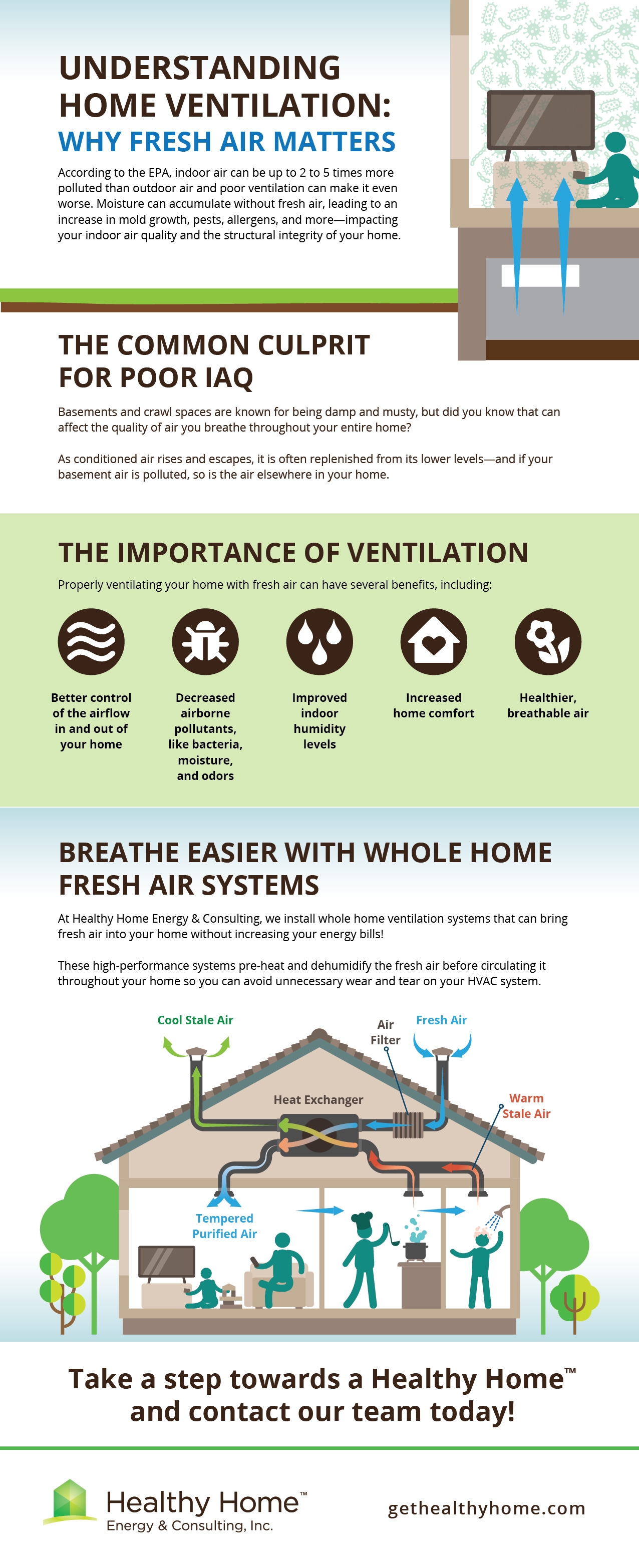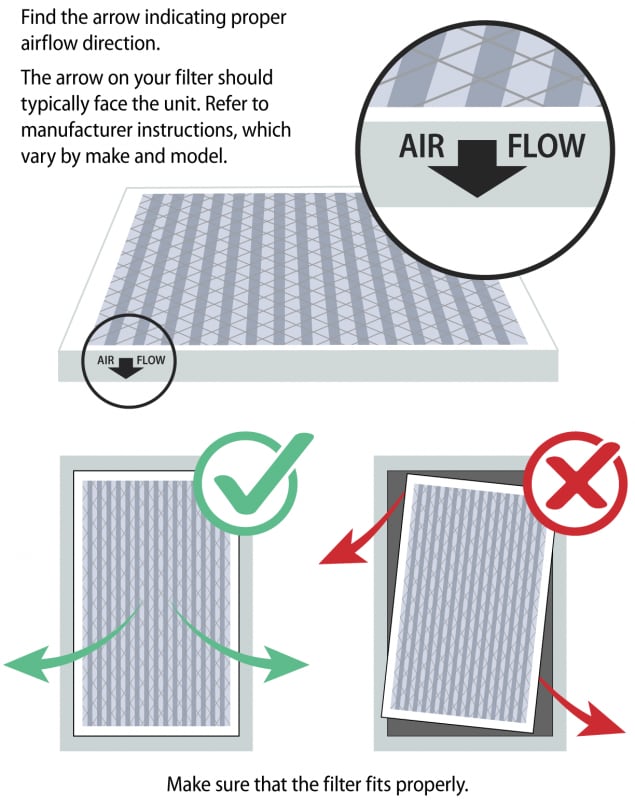The Role of Home Air Flow in Stopping Mold and Indoor Allergens
Home air flow is an important element in maintaining a healthy and balanced indoor setting. It controls moisture degrees, which can avoid the growth of mold and the accumulation of allergens. Many home owners forget the relevance of proper ventilation, typically causing undetected problems. Comprehending how air flow systems function and their influence on air quality can be the secret to a much healthier living room. What actions can be taken to improve these systems successfully?
Comprehending Home Air Flow Solutions
While many house owners might ignore the importance of air flow, comprehending home ventilation systems is essential for maintaining interior air top quality and stopping mold and mildew development - Home Ventilation Melbourne. These systems facilitate the exchange of stale interior air with fresh exterior air, effectively decreasing contaminants and dampness degrees. Common types consist of all-natural ventilation, which counts on wind and temperature differences, and mechanical air flow, which makes use of followers and air ducts to regulate airflow. Furthermore, well balanced air flow systems integrate both techniques to maximize air top quality. Correctly made and maintained ventilation systems can assist manage temperature and moisture, ensuring a comfy living atmosphere. Property owners must think about elements like home environment, occupancy, and layout when selecting an air flow system to best match their demands and improve total air quality
The Effect of Humidity on Mold Growth
Moisture plays a vital duty in mold development, making it an important aspect for homeowners to keep an eye on. Mold and mildew thrives in environments where humidity levels surpass 60%, as these conditions supply the wetness required for spores to sprout and proliferate. High humidity can arise from various resources, including bad ventilation, water leaks, and cooking or bathing tasks. When humidity levels stay elevated, mold and mildew can establish rapidly on natural products such as drywall, fabric, and timber. Homeowners ought to utilize dehumidifiers and ensure correct ventilation in areas susceptible to wetness, such as cellars and bathrooms. Preserving indoor moisture between 30% and 50% can substantially lower the threat of mold development, adding to a healthier living setting.
Recognizing Typical Indoor Allergens
Interior atmospheres can harbor a selection of irritants that influence health and comfort. Usual interior irritants include allergen, family pet dander, mold spores, and plant pollen. Dust mites grow in bedding, carpets, and furniture, feeding on organic material and contributing to breathing concerns. Family pet dander, composed of small flakes from skin and hair, can activate allergies in sensitive individuals. Mold and mildew spores, often existing in damp locations, can proliferate and influence air top quality. Furthermore, pollen can penetrate homes via open windows or on clothes. Identifying these allergens is important for preserving a healthy and balanced indoor setting. Understanding of their visibility allows homeowners to take positive measures to lessen direct exposure and boost overall indoor air top quality.
Benefits of Proper Air Flow
Correct air flow is crucial for keeping a healthy indoor environment, as it aids to manage air high quality and minimize the build-up of contaminants. Sufficient air flow promotes the exchange of exterior and interior air, thereby thinning down damaging materials such as unstable organic substances, allergens, and dirt. This process not just enhances comfort however also adds to the overall wellness of residents by lessening respiratory system issues (Home Ventilation Melbourne). Additionally, appropriate ventilation successfully controls moisture degrees, minimizing the possibility of mold and mildew development and cultivating a drier setting favorable to health. In addition, it can boost energy efficiency by making certain that heating & cooling systems operate better, causing lower energy expenses. Overall, appropriate air flow is an important element in advertising a secure and healthy living area

Tips for Improving Home Air Flow
Although lots of property owners may ignore it, boosting home air flow is important for enhancing air high quality and avoiding mold growth. One efficient strategy is to routinely open home windows to promote cross-ventilation, allowing fresh air to flow. Setting up exhaust followers in bathrooms and cooking areas can efficiently eliminate moisture-laden air, reducing humidity levels. Homeowners should additionally consider using air purifiers with HEPA filters to capture pollutants and irritants. Frequently keeping a/c systems, including altering filters, guarantees come to a head air flow and efficiency. Sealing leakages around home windows and doors can avoid outdoors air from going into, which helps maintain a regular indoor atmosphere. Integrating houseplants can normally boost air high quality while adding aesthetic worth to the home.
Frequently Asked Questions
How Commonly Should I Clean My Home Ventilation System?
Establishing exactly how often to cleanse a home ventilation system depends on various aspects, including usage and ecological problems. Home Ventilation Melbourne. Normally, experts suggest a detailed cleansing Recommended Site every three to 5 years to keep ideal air movement and effectiveness
Can Plants Help Decrease Indoor Allergens?
Research study shows that specific interior plants may help minimize allergens by improving air top quality and increasing humidity. Their effectiveness differs, and maintaining a tidy environment continues to be important for handling indoor irritants successfully.
What Sorts Of Air Filters Are Ideal for Mold And Mildew Avoidance?

Are There Particular Ventilation Demands for Cellars?

Exactly how Do I Know if My Air Flow Is Working Efficiently?
To determine reliable air flow, one need to monitor humidity levels, check airflow through vents, and observe signs of condensation or stationary air. Regular evaluations can show whether the system sufficiently circulates and exchanges indoor air.
Understanding just how ventilation systems function and their impact on air high quality might be the trick to a much healthier living space. While numerous house owners may neglect the relevance of air flow, recognizing home ventilation systems is essential for maintaining indoor air high quality and preventing mold growth. Common kinds include natural ventilation, which relies on wind and temperature differences, and mechanical air flow, which utilizes fans and air ducts to control airflow. Appropriate ventilation is crucial for maintaining a healthy and balanced interior atmosphere, as it helps to regulate air top quality and reduce the accumulation of toxins. click here for info Numerous property owners may ignore it, improving home air flow is important for improving air top quality and preventing mold and mildew development.